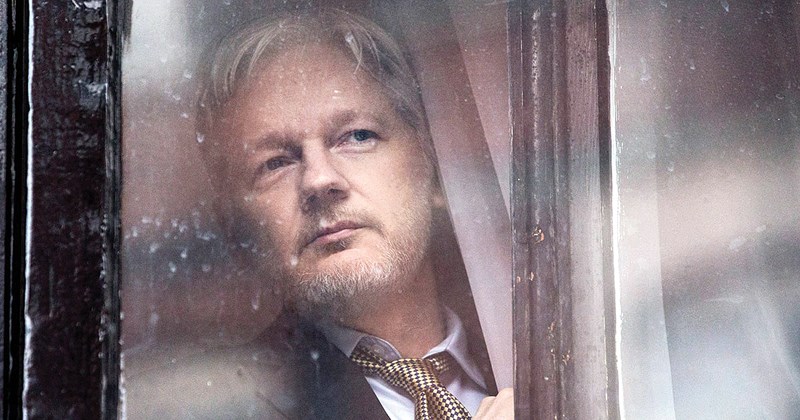Risk. Directed and produced by Laura Poitras. Featuring Julian Assange. Rating: 7 (out of 10)
People can be split into three disparate groups when it comes to Julian Assange: those who view the WikiLeaks founder as a freedom-of-information demigod, those who revile him for helping Trump win the election, and those who get him mixed up with Edward Snowden.
If you are in the latter camp, you may be forgiven: there is more than a little crossover between the two men, including the filmmaker herself. Laura Poitras was the recipient of encrypted emails revealing the government’s covert-surveillance programs, emails sent by none other than Snowden. (She flew to Hong Kong and filmed the entire thing in her award-winning documentary Citizenfour.) That meeting, and Poitras’ refusal to post the information to
WikiLeaks, is what ends the much longer collaboration between Assange and the filmmaker, a relationship that began in 2010.
Poitras’ film plays not unlike a season of Homeland: there are episodic stops in Cairo during the Arab Spring aftermath, conversations with White House staffers warning them of impending security breaches, allegations of sexual assault, elaborate disguises (complete with hair dye and coloured contact lenses), and endless surveillance and stakeouts by governmental agencies.
Assange started hacking as a teenager and founded WikiLeaks in 2006. There were early leaks about Guantanamo Bay and the Church of Scientology, and 90,000 classified documents from the war in Afghanistan and civilian casualties. Critics pointed to the security risks while advocates saw Wikileaks as a means to expose increasingly covert U.S. operations and surveillance on its public. “The news value is paramount in everything we do,” says Assange.
A video of an Apache helicopter mowing down Iraqi reporters and civilians is sent to Wikileaks via Army intelligence analyst Bradley Manning (now Chelsea Manning). We see Assange watching the trial with dismay, and later calling Hilary Clinton a “war-monger”.
“Sometimes I can’t believe what Julian allows me to film,” Poitras says during one of her production-log voiceovers. This includes a phonecall to his mum in Australia (with girlfriend Sarah Harrison on the extension), and a sad in-person meeting between mother and son where she wipes down their fingerprints in a hotel room while he dons a disguise.
And after allegations emerge by two women in Sweden of sexual assault, Assange cracks a tasteless half-joke about how the charges elevated his profile: “a sex scandal every six months is the way… it’s a platform.” Assange muses about a lesbian nightclub and radical feminist conspiracies while being coached by a frustrated lawyer on how to talk about the allegations to the press.
There are the rock-star moments: more than a half-dozen people fawning appreciatively as Assange gets a haircut; a bizarre interview with Lady Gaga, during which Assange says – not without irony – “let’s not pretend for a minute that I’m a normal person.”
The narrative unravels somewhat (and Poitras loses some credibility) after Jacob Appelbaum – with whom Poitras admits to having a brief relationship – is accused of sexual misconduct and forced to leave the non-profit where he works. When asked to be interviewed for the film Appelbaum declined, saying he wanted the film to have a different ending. “So do I,” says the filmmaker.
It’s an amazing insiders’ look at the WikiLeaks founder, who remains holed up in the Ecuadorian embassy in London. Unlikeable and narcissistic as he appears, Assange is still a prime example of how flawed people can accomplish important things, and Poitras’s free access to Assange makes her documentary an important piece of filmmaking.



